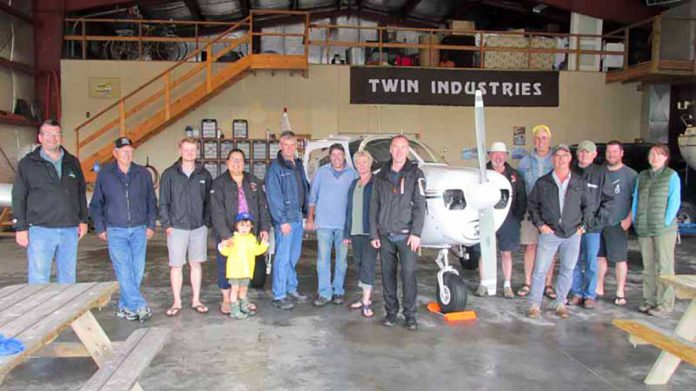MANITOULIN—Anishinabek First Nation Deputy Grand Chief Glen Hare says an accident last week near St. Catharines in which a transport truck carrying a toxic chemical rolled over on the Queen Elizabeth Highway, causing an evacuation of local residents, again points to why First Nations and others are in opposition to the shipping of any type of hazardous chemicals or nuclear waste materials from any point in Ontario or Canada.
“This is exactly the type of example that we are trying to stop nuclear waste and hazardous chemicals-materials being shipped from Chalk River to Carolina, or nuclear waste being from the Bruce Nuclear station being transported or stored anywhere in Ontario or Canada,” stated Glen Hare. “The truck rollover shut down at least two lanes of traffic on the QEW at St. Catharines and local residents had to be evacuated.”
The Canadian Press reported on June 14 that all but one lane of the QEW reopened early on Wednesday of last week, several hours after a transport truck hauling a toxic chemical rolled over and forced an evacuation and a shelter-in-place order for surrounding homes and businesses.
The city of St. Catharines said the crash happened at about 3:20 pm (June 13) when the truck rolled onto a concrete highway divider, near St. Catharines.
The truck was hauling phosphine, a flammable and toxic gas. This is a colourless, usually odourless gas used in textiles, fumigation and pest control in farms. It can also burst into flames when exposed to water and if inhaled phosphine attacks the human body like a military-grade nerve gas, Canadian Press reported. While tests in the area around the crash scene found no trace of phosphine leak, due to the potentially volatile and toxic nature of the trucks’ cargo, emergency services established an evacuation zone in a 1.2 kilometre radius around the crash. Residents were asked to keep their windows and chimneys closed and their air conditioners turned off. No injuries were reported.
“That is why we are trying to stop nuclear waste being transported,” stated Deputy Chief Hare. “This was a real example of what can happen when toxic chemicals are transported. And it doesn’t matter where it is this type of thing affects everyone in an area.”
“This is why we want to stop any type of nuclear waste or hazardous materials being transported on our highways and roads,” continued Deputy Chief Hare. “If this similar accident or a nuclear waste crash took place while being transported and there was a leak of the chemicals in our seaway or lakes you could say goodbye to our water supply. Not to mention how it would affect people in an area where this type of accident took place.”





